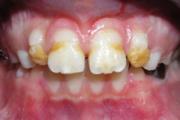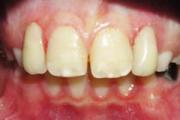Esthetic Composite Fillings
Economical and Esthetic Solution
Lifelike Composite Fillings
Our daily diet and the wear of our old front teeth restorations causes unacceptable appearance through discoloration.especilly the filling tooth interface gets darker and disturbes ones natural view.


Optimisation in Font Teeth Restorations
Todays technology enables us with the recent fillings to obtain maximum estetic results by only minimumly sarificing tooth structure.After removing old restorations the tooth structure underneath is perfectly sealed against any demage to pulp tissue(living structure in tooth)
The Contemporary Approach for Longlasting Esthetics
Recently in the chemistry of our new filling and bonding materials huge improvements are made towards better bond between tooth structure and the restorative substrate by maximizing the bonding surface so that even in case of minimum tooth availability we have stong lasting esthetic restorations.
Tooth-colored Composites
Advantages of composites:
- Aesthetics – the shade/color of the composite fillings can be closely matched to the color of existing teeth; is particularly well suited for use in front teeth or visible parts of teeth
- Bonding to tooth structure – composite fillings actually chemically bond to tooth structure, providing further support to the tooth
- Versatility in uses – in addition to use as a filling material for decay, composite fillings can also be used to repair chipped, broken, or worn teeth
- Tooth-sparing preparation – sometimes less tooth structure needs to be removed compared with amalgams when removing decay and preparing for the filling
Disadvantages of composites:
- Lack of durability – composite fillings wear out sooner than amalgams (lasting at least 5 years compared with at least 10 to 15 for amalgams); in addition, they may not last as long as amalgams under the pressure of chewing and particularly if used as the filling material for large cavities
- Increased chair time – because of the process to apply the composite material, these fillings can take up to 20 minutes longer than amalgams to place
- Additional visits – if composites are used for inlays or onlays, more than one office visit may be required
- Chipping – depending on location, composite materials can chip off the tooth
- Expense – composite fillings can cost up to twice the cost of amalgams
In addition to tooth-colored, composite resin fillings, two other tooth-colored fillings exist – ceramics and glass ionomer.
Other Filling Types
- Ceramics. These fillings are made most often of porcelain, are more resistant to staining than composite resin material but are also more abrasive. This material generally lasts more than 15 years and can cost as much as gold.
- Glass ionomer is made of acrylic and a specific type of glass material. This material is most commonly used for fillings below the gum line and for fillings in young children (drilling is still required). Glass ionomers release fluoride, which can help protect the tooth from further decay. However, this material is weaker than composite resin and is more susceptible to wear and prone to fracture. Glass ionomer generally lasts 5 years or less with costs comparable to composite resin.
